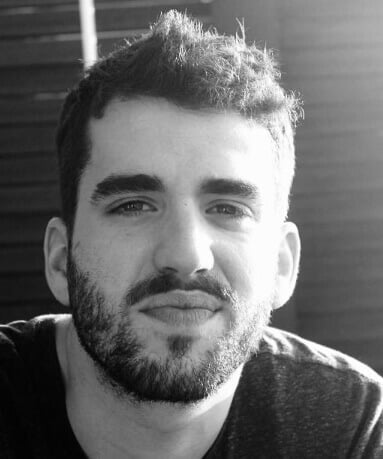Restorative rituals to overcome collective tragedies: a historical approach
When tragedy strikes—be it a natural disaster, a terrorist attack, or an act of mass violence—it leaves more than just physical destruction in its wake. The emotional and psychological toll on communities can last for generations, echoing through grief, trauma, and broken trust. In these moments, people around the world often turn to rituals—not just spiritual or religious ones, but communal acts of coming together, remembering, and healing. While these aren’t always formally recognized as restorative justice (RJ) processes, they often serve similar purposes: acknowledging harm, making space for voice and pain, and imagining ways forward rooted in collective dignity.
Take, for example, the Japanese practice of kuyō, a Buddhist mourning ritual that offers prayers not only for people but also for objects, animals, or even events associated with loss. After the Fukushima disaster in 2011, some communities held kuyō ceremonies to honor those who had died, but also for the land, the ocean, and even for the technology—acknowledging their role in the catastrophe. These rituals provided a space not just to grieve, but to process what had happened, and to articulate a communal story of responsibility, resilience, and hope.
Similarly, in post-genocide Rwanda, traditional gacaca courts were reimagined to respond to the extraordinary need for justice and reconciliation after the 1994 genocide. These local gatherings—held in the open air, with participation from victims, survivors, perpetrators, and neighbors—were far from perfect. But they represented a profoundly restorative impulse: to confront what had happened publicly, to allow for confession, forgiveness, and reintegration. In a context where formal justice systems were overwhelmed or unable to meet the social and emotional needs of the people, the gacaca process was both symbolic and pragmatic.
In the United States, after the 2015 mass shooting at the Mother Emanuel AME Church in Charleston, South Carolina, the community responded not only with mourning, but also with a striking example of collective forgiveness. In the days that followed, many of the victims’ family members publicly forgave the perpetrator. While this moment was deeply personal and spiritual for those involved, it also became a communal ritual—one that opened national conversations about the meaning of justice, faith, and healing.
What all these examples have in common is that they bypass—or move alongside—traditional legal and institutional responses. They focus instead on people, relationships, and meaning. They don’t erase grief or seek to “fix” what has been broken. Instead, they carve out space for recognition, voice, and rebuilding trust—core pillars of any restorative process.
Even in societies with robust legal systems, there’s a growing recognition that something more is needed in the wake of tragedy. After the terrorist attacks in Norway in 2011, the government organized a series of dialogues with survivors and community members, including listening circles and public commemorations. These gatherings were not about blame or judgment; they were about holding space, about recognizing that trauma doesn’t fade quietly with time—it needs to be witnessed.
Rituals are deeply cultural, but the need for healing after collective trauma is universal. In Māori communities in New Zealand, hui (community gatherings) often play a restorative role after conflict or tragedy. The use of whakawhanaungatanga—the process of building relationships and connection—is central to these gatherings, helping individuals feel grounded and supported by the collective. The state’s own embrace of restorative justice practices often draws inspiration from these indigenous models.
In Argentina, the legacy of the dictatorship and the disappearance of thousands of citizens still lives in the weekly ritual of the Madres de Plaza de Mayo. Every Thursday, mothers and grandmothers march in silence in Buenos Aires, holding photos of their missing children. This ritual—ongoing for over 40 years—is not only a cry for truth and justice, but also a living act of remembrance and community healing. While not formalized as restorative justice, it embodies the restorative logic of visibility, acknowledgement, and collective responsibility.
So what happens when we begin to see these rituals not just as isolated cultural acts, but as expressions of a broader restorative instinct?
Restorative justice, at its heart, is about relationships. It’s about the human need to be heard, to make meaning out of harm, and to find ways to coexist after rupture. When tragedy touches a whole community, formal justice processes often fall short. They might determine guilt or establish accountability, but they rarely touch the deeper emotional or symbolic needs of those affected. This is where restorative rituals—whether rooted in cultural traditions or newly invented—fill the void.
And this is also where platforms like Restorativ can contribute meaningfully.
At Restorativ, we believe that restoration is not only an individual process but a collective one. In the aftermath of community-wide harm, people need tools to come together, share their stories, and feel part of something larger than their own pain. We aim to support communities and facilitators who want to design such processes—whether through digital storytelling, community dialogue events, or culturally sensitive adaptations of restorative frameworks. Importantly, we’re not here to “import” models, but to listen, collaborate, and help amplify the healing practices that communities already have or are trying to create.
In a world marked increasingly by collective traumas—climate disasters, political violence, pandemics—the need for restorative rituals is more urgent than ever. People need spaces to grieve together, to name the harm done, and to imagine something different. Whether through ceremony, storytelling, or structured dialogue, communities are already showing us the way.
Restorative justice is not a blueprint—it’s a lens. And when we look through that lens, we begin to see that healing doesn’t just come from courts or compensation. It comes from community, from courage, and from the rituals that help us make sense of the senseless.
In that spirit, Restorativ is committed to being a partner in this ongoing global journey—supporting those who dare to turn pain into presence, and tragedy into transformation.
